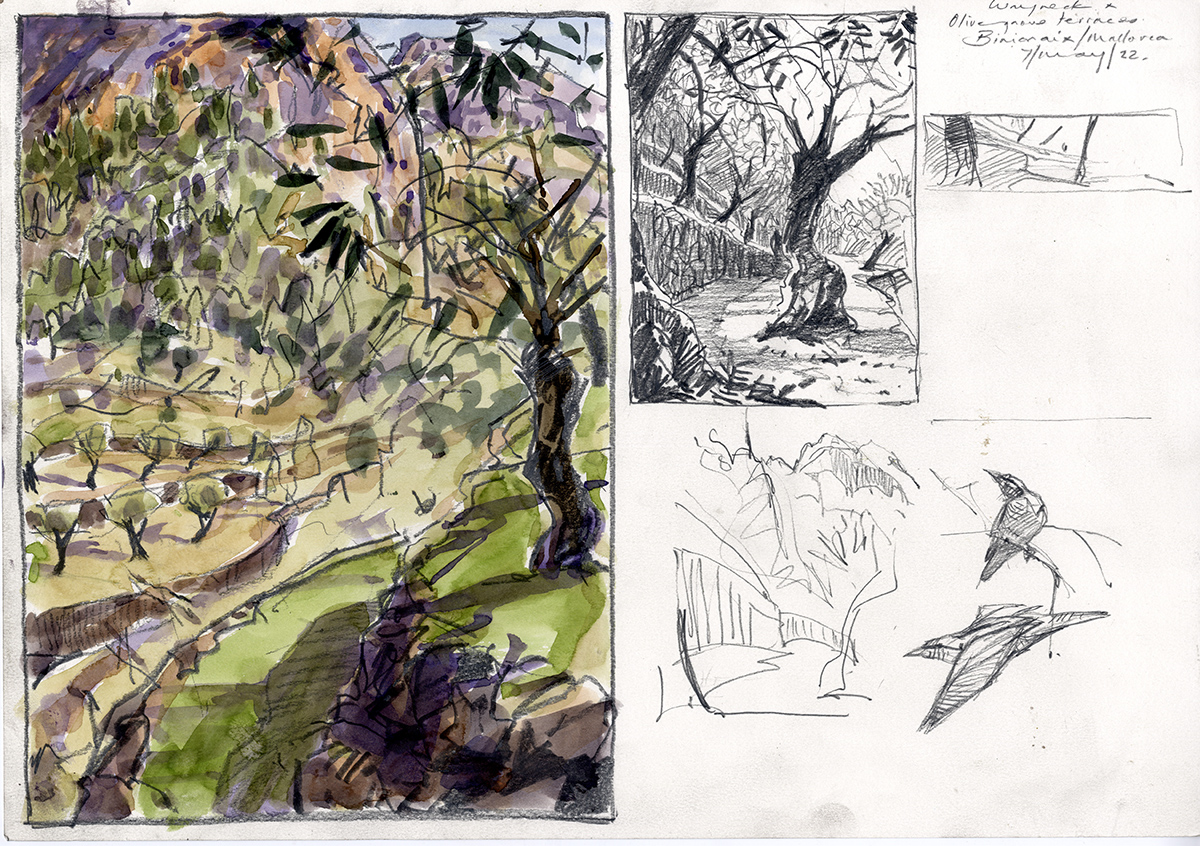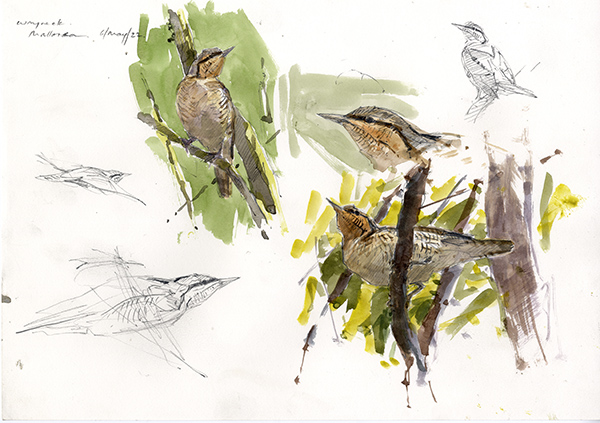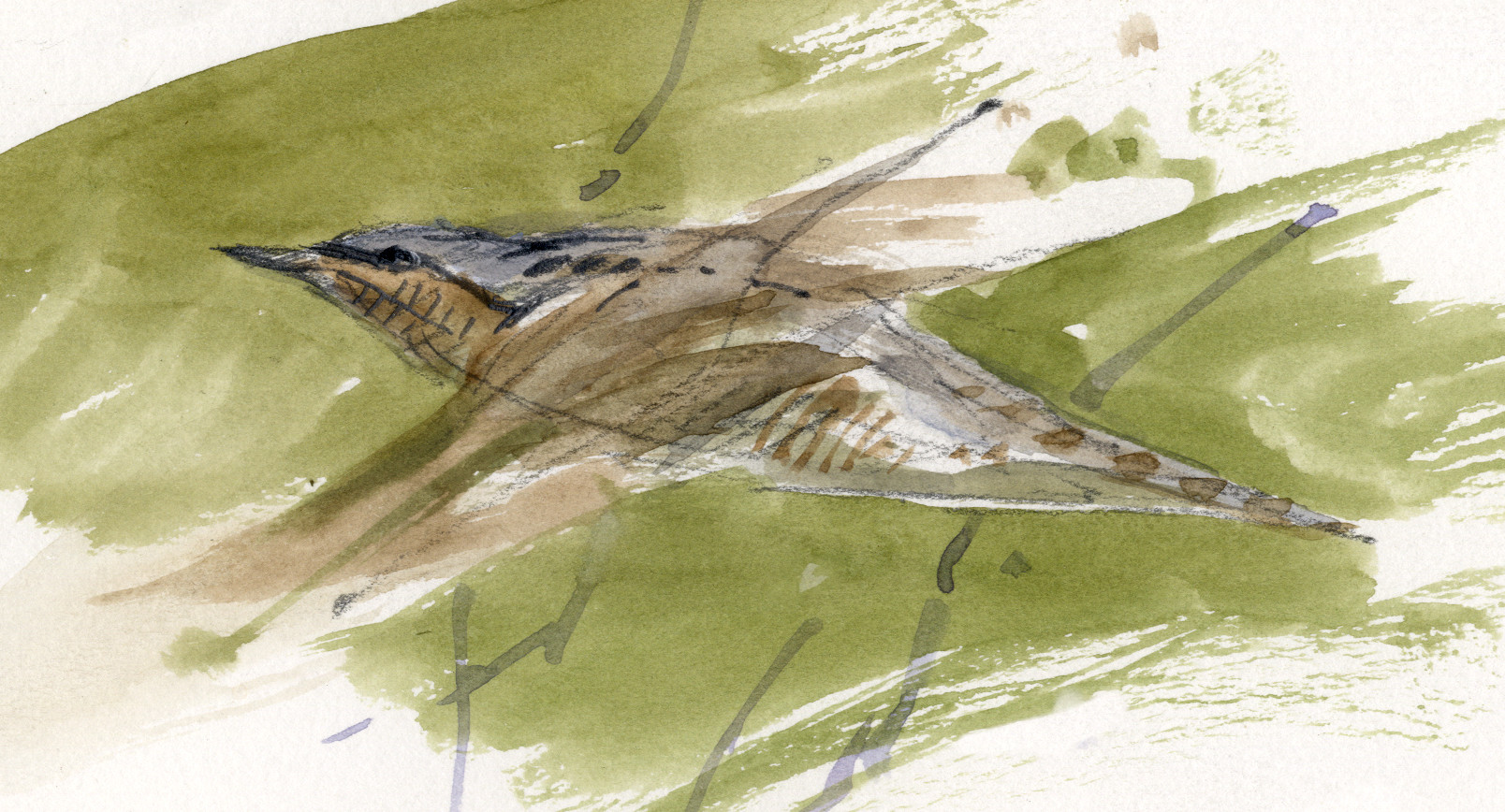| MallorcaMay 2022It was a wonderful feeling being able to escape to the sun and spring warmth of the island after such a long time trapped at home by Covid and all its restrictions. The location was a valley above Sóller and a farmhouse set among terraced olive groves at the edge of a small village where courtyard gardens heaved with fruiting lemon and orange trees. The hills rising dramatically behind the house where home to Sardinian Warblers and Serrins, higher up there were Peregrines and Booted Eagles, Griffon Vultures; and one day a Black Vulture. The olive orchard scrub on the terraces had a near continuous melody of singing Nightingales and trilling Goldfinches, and every now and then more jagged notes were added to the chorus by calling Wrynecks.
Wrynecks are bizarre and unmistakable birds, and difficult to observe. They are a small grey woodpecker with cryptic plumage appearing greyish overall, with brown and buff mottling. They have a contrasting dark band running down from the back of the head onto the back. They favour open country with scattered trees, orchards and farmland feeding almost exclusively on ants. Unlike other woodpeckers they do not climb vertical trunks or branches in the trees, but instead feed mainly on the ground probing with its long tongue for ants; hops with deliberate, rather jerky motions, often twitching its tail and turning its head. Song is a rising series of high, piercing notes, similar to that of a falcon. Wrynecks get their English name from their ability to turn their heads almost 180° in an almost snake-like way especially when disturbed at the nest when they can twist their heads and hiss as a threat display. Hence the occasional name of "snake-bird" |
© Bruce Pearson 2025. All rights reserved


